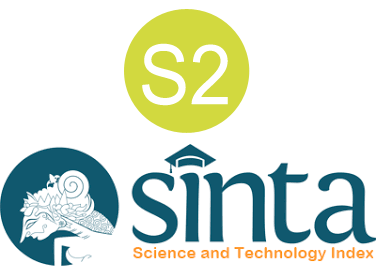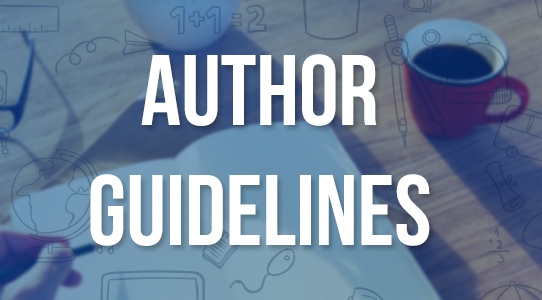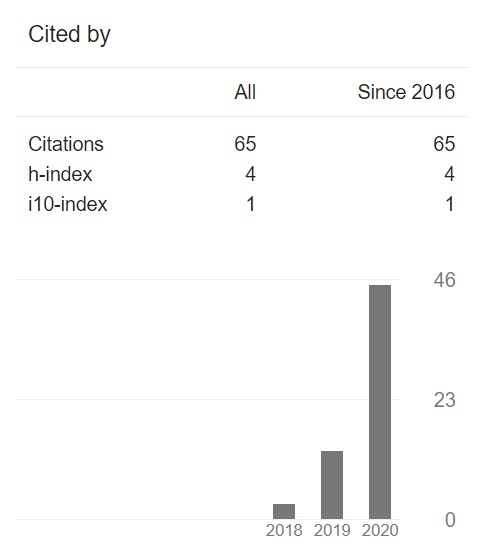Digital Transformation in Lesson Planning: Automating Semester Learning Plans to Improve Pedagogical Effectiveness
DOI:
https://doi.org/10.37680/qalamuna.v17i1.6583Keywords:
Digital Transformation; Pedagogical Effectiveness; R-Tfac; Semester Learning PlansAbstract
Digital transformation in education has become crucial to improving effectiveness in academic processes. This study aims to develop the RTFAC application to enhance the efficiency of the Semester Learning Plan (Rencana Pembelajaran Semester) formulation. The research employs the research and development method with the Borg & Gall model. The subjects involved in this study include experts, PGMI and PAI lecturers, researchers, and the university's quality assurance institution. The study resulted in a product in the form of an RPS formulation application called RTFAC. Product testing results on aspects such as feature compatibility with RPS formulation needs, application functionality quality, user interface, application performance efficiency, curriculum alignment, and data reliability and security, as assessed by expert validators, are deemed highly feasible. Based on the effectiveness test using a one-sample t-test, it was found that the RTFAC application significantly improves the efficiency of RPS formulation. Therefore, the RTfac application at UIN Sayyid Ali Rahmatullah Tulungagung is expected to reduce lecturers' workload in formulating semester learning plans (RPS), which may contribute to enhanced pedagogical effectiveness.
Downloads
References
Abdulrahaman, M. D., Faruk, N., Oloyede, A. A., Surajudeen-Bakinde, N. T., Olawoyin, L. A., Mejabi, O. V., Imam-Fulani, Y. O., Fahm, A. O., & Azeez, A. L. (2020). Multimedia tools in the teaching and learning processes: A systematic review. Heliyon, 6(11), e05312. https://doi.org/10.1016/j.heliyon.2020.e05312
Alenezi, M., Wardat, S., & Akour, M. (2023). The Need of Integrating Digital Education in Higher Education: Challenges and Opportunities. Sustainability (Switzerland), 15(6), 1–12. https://doi.org/10.3390/su15064782
Alfauzan, A. A. H., & Tarchouna, N. (2017). The Role of an Aligned Curriculum Design in the Achievement of Learning Outcomes. Journal of Education and E-Learning Research, 4(3), 81–91. https://doi.org/10.20448/journal.509.2017.43.81.91
Ali, L. (2018). The Design of Curriculum, Assessment and Evaluation in Higher Education with Constructive Alignment. Journal of Education and E-Learning Research, 5(1), 72–78. https://doi.org/10.20448/journal.509.2018.51.72.78
Arya Arimbawa, G. P., Wisna Ariawan, I. P., & Parwati, N. N. (2024). Pengembangan Virtual Lab Untuk Meningkatkan Kemampuan Berpikir Kritis Siswa SMP Kelas VIII Pada Mata Pelajaran Matematika. JKTP: Jurnal Kajian Teknologi Pendidikan, 7(1), 046. https://doi.org/10.17977/um038v7i12024p046
Asbari, M., & Novitasari, D. (2024). Outcome-Based Education Model: Its Impact and Implications for Lecturer Creativity and Innovation in Higher Education. International Journal of Social and Management Studies, 05(05), 22–31.
Ayyildiz, P., Yilmaz*, A., & Serif, H. (2021). Exploring Digital Literacy Levels and Technology Integration Competence of Turkish Academics. International Journal of Educational Methodology, 7(1), 15–31. https://doi.org/10.12973/ijem.7.1.15
Blankesteijn, M. L. (M L. )., Houtkamp, J. (J )., & Bossink, B. (B A. G. ). (2024). Towards transformative experiential learning in science- and technology-based entrepreneurship education for sustainable technological innovation. Journal of Innovation and Knowledge, 9(3), 100544. https://doi.org/10.1016/j.jik.2024.100544
Bygstad, B., Øvrelid, E., Ludvigsen, S., & Dæhlen, M. (2022). From dual digitalization to digital learning space: Exploring the digital transformation of higher education. Computers and Education, 182(August 2021). https://doi.org/10.1016/j.compedu.2022.104463
Chen, R. (2020). A comprehensive review of robotic surgery curriculum and training for residents, fellows, and postgraduate surgical education. Surgical Endoscopy, 34(1), 361–367. https://doi.org/10.1007/s00464-019-06775-1
Christopoulos, A., & Sprangers, P. (2021). Integration of educational technology during the COVID-19 pandemic: An analysis of teacher and student reactions. Cogent Education, 8(1). https://doi.org/10.1080/2331186X.2021.1964690
Creswell, W. J., & Creswell, J. D. (2018). Research Design: Qualitative, Quantitative, and Mixed Methods Approaches. In Journal of Chemical Information and Modeling (Vol. 53, Issue 9).
Deeley, S. J., Fischbacher-Smith, M., Karadzhov, D., & Koristashevskaya, E. (2019). Exploring the ‘wicked’ problem of student dissatisfaction with assessment and feedback in higher education. Higher Education Pedagogies, 4(1), 385–405. https://doi.org/10.1080/23752696.2019.1644659
Dwivedi, Y. K., Rana, N. P., Jeyaraj, A., Clement, M., & Williams, M. D. (2019). Re-examining the Unified Theory of Acceptance and Use of Technology (UTAUT): Towards a Revised Theoretical Model. Information Systems Frontiers, 21(3), 719–734. https://doi.org/10.1007/s10796-017-9774-y
El-Amin, Z. N. (2017). The relationship between positive behavior Interventions and school climate/culture in elementary schools (Issue November).
Field, A. (2024). Discovering Statistics Using IBM SPSS Statistics. SAGE Publisher.
Firdaus, T. A., Putra, R. H., Arifandi, F., Anam, M. K., & Lathifah, L. (2023). Implementasi Sistem Rencana Pembelajaran Semester Berbasis Web Untuk Mempermudah Proses Pembelajaran. Jurnal Teknoinfo, 17(1), 156. https://doi.org/10.33365/jti.v17i1.2348
Ghafar, Z. N., & Mohamedamin, A. A. (2022). The Role of Technology and E-Learning Process in English Language Teaching from Schools to Universities: A Review of Literature. Canadian Journal of Language and Literature Studies, 2(6), 21–31. https://doi.org/10.53103/cjlls.v2i6.75
Ghufron, M. A. (2018). Revolusi Industri 4.0: Tantangan, Peluang, Dan Solusi Bagi Dunia Pendidikan. Seminar Nasional Dan Diskusi Panel Multidisiplin Hasil Penelitian Dan Pengabdian Kepada Masyarakat 2018, 1(1), 332–337.
Haqiqi, A. K. (2019). Telaah Implementasi Kurikulum 2013: Tinjauan Pada Rencana Pelaksanaan Pembelajaran (RPP) Mata Pelajaran Ilmu Pengetahuan Alam. Journal of Natural Science and Integration, 2(1), 12. https://doi.org/10.24014/jnsi.v2i1.7110
Hidayati, D., & Imama, M. L. (2024). TEACHER HABITS AND WORKLOAD IN THE DIGITALIZATION OF EDUCATION. 7(4), 195–208. https://doi.org/10.17977/um038v7i42024p195
Jabar, P. D., Titirloloby, P., Bwariat, S., & Sakliresy, A. K. (2024). DEVELOPING AN ENGLISH DIGITAL TEXTBOOK BASED ON TANIMBAR LOCAL WISDOM AND ITS CONTRIBUTION TO ENGLISH CURRICULUM. 7(2), 98–107. https://doi.org/10.17977/um038v7i22024p098
Kabier, M. K., Yassin, A. A., Abduljabbar, Z. A., & Lu, S. (2023). Role-Based Access Control Using Biometrics in the Educational System. Basrah Researches Sciences, 49(1), 85–101. https://doi.org/10.56714/bjrs.49.1.8
Legramante, D., Azevedo, A., & Azevedo, J. M. (2023). Integration of the technology acceptance model and the information systems success model in analyzing Moodle’s satisfaction and continuity of use. International Journal of Information and Learning Technology, 40(5), 467–484. https://doi.org/10.1108/IJILT-12-2022-0231
McKillup, S. (2015). Statistics Explained. Cambridge University Press.
Miller, I. M. and M. (2004). John E. Freund’s Mathematical Statistics with Applications. Routledge.
Munandar, H., Ade Kurnia Harahap, M., Haryanto, H., & Lisma Lestari, V. (2023). Pemanfaatan Teknologi Artificial Intelligences (AI) Bagi Dosen Dalam Menghadapi Tantangan Perguruan Tinggi Pada Era Disrupsi. INNOVATIVE: Journal Of Social Science Research, 3, 10566–10576.
Munna, A. S., & Kalam, M. A. (2021). Teaching and learning process to enhance teaching effectiveness: Literature review. International Journal of Humanities and Innovation (IJHI), 4(1), 1–4. https://doi.org/10.33750/ijhi.v4i1.102
Nurdin, A. (2016). Inovasi Pembelajaran Pendidikan Agama Islam Di Era Information and Communication Technology. TADRIS: Jurnal Pendidikan Islam, 11(1), 49. https://doi.org/10.19105/tjpi.v11i1.971
Putra, H. (2023). Sistem Informasi Manajemen Surat Masuk Dan Keluar (SIM-SMK) Responsif Berbasis Web Menggunakan Metode Design Thinking. Bulletin of Computer Science Research, 3(6), 435–441. https://doi.org/10.47065/bulletincsr.v3i6.275
Rahman, A., & Nuryana, Z. (2019). Pendidikan Islam di Era Revolusi Industri 4.0. 34–0. https://doi.org/10.31219/osf.io/8xwp6
Rocque, S. R. (2022). EVALUATING THE EFFECTIVENESS OF MOBILE APPLICATIONS IN ENHANCING LEARNING AND DEVELOPMENT. International Journal of Innovative Technologies in Social Science, 3(September), 31–34. https://doi.org/10.31435/rsglobal
Sabir, A., Abbasi, N. A., & Islam, M. N. (2018). An electronic data management and analysis application for ABET accreditation. Physics Education, 1–30.
Sajja, R., Sermet, Y., Cikmaz, M., Cwiertny, D., & Demir, I. (2023). Artificial Intelligence-Enabled Intelligent Assistant for Personalized and Adaptive Learning in Higher Education. https://doi.org/10.3390/info15100596
Setiyawati, E., Wulandari, F., Bahak Udin By Arifin, Moch., Erik Rudyanto, H., & Santia, I. (2018). Using Online Learning Systems to Measure Students’ Basic Teaching Skills. International Journal of Engineering & Technology, 7(4.7), 463. https://doi.org/10.14419/ijet.v7i4.7.27360
Sodhi, R., Choudhary, J., Patidar, A., Soni, L., Joshi, R., & Gautam, K. D. (2024). INTELLIGENT SYSTEMS AND APPLICATIONS IN ENGINEERING: A Model to Automate the Development of Computer Science Curriculum Syllabi.
Sridhar, P., Doyle, A., Agarwal, A., Bogart, C., Savelka, J., & Sakr, M. (2023). Harnessing LLMs in Curricular Design: Using GPT-4 to Support Authoring of Learning Objectives. CEUR Workshop Proceedings, 3487, 139–150.
Stamov Roßnagel, C., Fitzallen, N., & Lo Baido, K. (2020). Constructive alignment and the learning experience: Relationships with student motivation and perceived learning demands. Higher Education Research and Development, 0(0), 1–14. https://doi.org/10.1080/07294360.2020.1787956
Syafarina, G. A., & Setiawan, A. (2019). PERANCANGAN APLIKASI RENCANA PEMBELAJARAN SEMESTER (RPS) UNTUK MENINGKATKAN PENCAPAIAN PEMBELAJARAN BAGI DOSEN. Elektronika, 10(4), 101–102.
Tavakoli, M., Faraji, A., Molavi, M., Mol, S. T., & Kismihók, G. (2022). Hybrid Human-AI Curriculum Development for Personalised Informal Learning Environments. ACM International Conference Proceeding Series, 1(1), 563–569. https://doi.org/10.1145/3506860.3506917
UNESCO. (2018). A Global Framework of Reference on Digital Literacy. 51.
Yan, D. (2023). Visible learning: The sequel: A synthesis of over 2,100 meta-analyses relating to achievement Visible learning: The sequel: A synthesis of over 2,100 meta-analyses relating to achievement, by John Hattie, Abingdon, Routledge, 2023, 510 pp., £18.39 (pbk). Teacher Development, 27(5), 664–667. https://doi.org/10.1080/13664530.2023.2237484
Yunus, Y. M., Feisal, A., Feisal, M., & Yusuf, R. (2025). AI-Powered Educational Technologies: Impacts on Curriculum Design and Implementation. XXVI, 229–236.
Zahurin, K., Mamat, N., Wan Ali, W. N. H., & Abas, H. (2024). The Influence of Robotic Process Automation on the Administrative Workload of Teachers. Open International Journal of Informatics, 12(1), 47–56. https://doi.org/10.11113/oiji2024.12n1.296
Downloads
Published
How to Cite
Issue
Section
License
Copyright (c) 2025 Uswatun Hasanah, Annas Ribab Sibilana

This work is licensed under a Creative Commons Attribution-ShareAlike 4.0 International License.
Authors who submit manuscript retain its copyright and grant publisher right of first publication licensed under a Creative Commons Attribution-ShareAlike 4.0 International License (CC BY-SA 4.0) that allows others to access (search, read, download, and cite), share (copy and redistribute the material in any medium or format) and adapt (remix, transform, and build upon any material) the work for any lawful purpose, even commercially with an acknowledgement of the work's authorship and initial publication in Qalamuna: Jurnal Pendidikan, Sosial, dan Agama.












